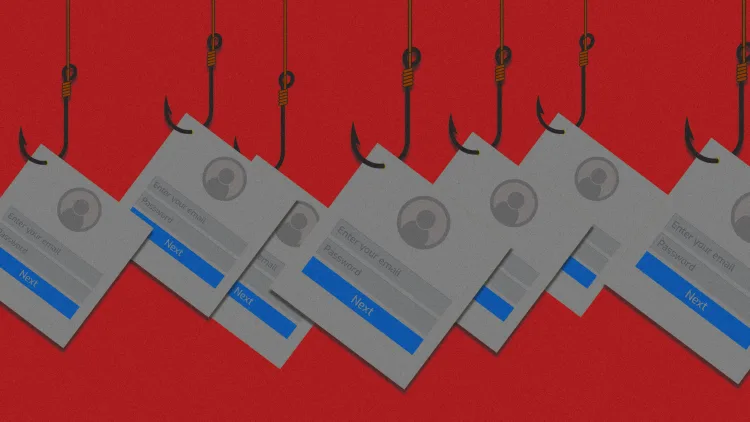Social media platforms have revolutionized the way we connect, communicate, and conduct business. However, they have also become fertile ground for a new breed of cybercriminals who exploit fake profiles to deceive, manipulate, and defraud unsuspecting users. The prevalence of fake profiles on platforms such as Facebook, LinkedIn, and Twitter has led to a surge in scams, ranging from identity theft to elaborate financial fraud schemes. This article examines the rise of fake profile scams, provides insights on how to identify them, and offers practical advice on what to do if your account—or a friend’s—has been compromised.
Understanding Fake Profile Scams
Fake profiles on social media are often created by scammers for various illicit purposes. These profiles may impersonate real individuals or represent entirely fictitious identities. Common scams perpetrated through fake profiles include:
1. Phishing Scams: Scammers create fake profiles to connect with victims and gain their trust. They may pose as potential employers, colleagues, or acquaintances to extract sensitive information such as passwords, credit card numbers, and social security details. This type of scam is particularly prevalent on LinkedIn, where fraudsters often disguise themselves as recruiters offering lucrative job opportunities.
2. Romance Scams: Fake profiles are used to establish online romantic relationships with victims. The scammer builds trust over time, only to later request money under false pretenses, such as medical emergencies or travel expenses.
3. Financial Scams: On Facebook and Twitter, scammers use fake profiles to promote fraudulent investment schemes, fake charity appeals, or requests for urgent financial help. They often exploit emotional appeals to trick users into sending money.
4. Business Impersonation Scams: Scammers clone legitimate business profiles or create fake ones to deceive customers. These fake business profiles are used to trick users into making payments for goods or services that are never delivered.
Spotting Fake Profiles
Identifying fake profiles is key to avoiding scams. Here are some indicators to watch for across major social media platforms:
– LinkedIn: Fake profiles on LinkedIn often lack detailed professional information, have few connections, and may use stock photos as profile pictures. Be wary of profiles that offer unsolicited job opportunities, especially if the offers seem too good to be true.
– Facebook: On Facebook, fake profiles may have very few friends, limited activity, or posts that all appear to have been made recently. Cloning a real user’s profile is a common tactic, where the scammer copies photos and friend lists to create a duplicate account.
– Twitter: Fake Twitter profiles often have generic or vague usernames, minimal tweets, and follow many accounts with little reciprocation. Scammers may also use bots to post spam or phishing links automatically.
Origins of Fake Profiles
Many fake profiles originate from organized crime rings and scam factories, often based in countries where law enforcement may be limited or corrupt. Nigeria, Russia, and the Philippines are known hotspots for these operations, though the problem is global. These organizations employ teams to create and manage fake profiles, enabling them to carry out scams on a large scale. These fake profiles are often part of broader networks that engage in illegal activities such as human trafficking, money laundering, and drug distribution.
What to Do If Your Account or a Friend’s Account Has Been Compromised
Knowing how to respond if you suspect your account—or a friend’s—has been cloned, taken over, or you’ve received a friend request from a suspicious account can prevent further damage. Here’s what to do in each scenario:
If You Think Your Account Has Been Cloned
1. Report the Cloned Account: Immediately report the fake account to the platform. Facebook allows you to report profiles directly from the user’s profile page, while LinkedIn and Twitter have similar reporting features.
2. Inform Your Contacts: Notify your friends and followers that your account has been cloned. Encourage them to report the fake profile and be cautious of any suspicious messages.
3. Review Privacy Settings: Tighten your privacy settings to prevent future cloning attempts. Limiting the visibility of your friends list and personal information can make it harder for scammers to create a convincing clone.
4. Update Your Profile: Consider updating your profile picture and personal details to differentiate your real account from the cloned one. Ensure these updates don’t reveal too much personal information that could be exploited.
If You Think Your Account Has Been Taken Over
1. Change Your Password Immediately: If you still have access to your account, change your password immediately. Choose a strong, unique password and avoid using the same password across multiple sites.
2. Enable Two-Factor Authentication (2FA): Activate 2FA to add an extra layer of security. This requires a second form of verification, such as a text message code, when logging in from a new device.
3. Check for Unauthorized Activity: Review your account activity for any unauthorized changes or posts. Facebook and LinkedIn allow you to view recent logins and log out of any suspicious sessions.
4. Report the Breach to the Platform: If you’ve lost access to your account, report it to the platform immediately. Most social media sites have processes in place for recovering hacked accounts.
5. Scan for Malware: Run a malware scan on your devices to ensure they aren’t infected. Malware can capture login credentials, facilitating account takeovers.
6. Inform Your Contacts: If a hacker has used your account to send messages, inform your contacts that your account was compromised and advise them not to interact with any suspicious links or content.
If You Receive a Friend Request from a Suspected Fake Account
1. Do Not Accept the Request: If you suspect an account is fake, do not accept the friend request. Accepting it could give the scammer access to your posts, photos, and friends list.
2. Investigate the Profile: Look for signs the profile may be fake, such as a lack of posts, a small number of friends, or suspicious activity.
3. Reverse Image Search: Use a reverse image search on the profile picture to see if it has been used elsewhere. Scammers often use stolen photos.
4. Report the Account: Report the account to the platform. Reporting helps prevent others from being scammed by the fake profile.
5. Warn Mutual Contacts: If you have mutual friends with the suspicious account, warn them about your suspicions. They might be targeted next.
6. Block the Account: After reporting, block the account to prevent further interaction.
The rise of fake profiles and account cloning on social media highlights the importance of vigilance and proactive measures to protect your online identity. By recognizing warning signs, securing your accounts, and taking swift action when needed, you can reduce the risks associated with these scams. Whether it’s through updating passwords, enabling two-factor authentication, or reporting suspicious accounts, every step toward securing your social media presence contributes to a safer digital environment.
For further study and resources on protecting yourself from scams, visit [US Crypto Cop] (https://www.uscryptocop.com), which offers insights and training on combating digital fraud and other online threats.
References
1. National Cyber Security Centre. “How to Spot a Fake Social Media Profile.” NCSC, 2021. [Link](https://www.ncsc.gov.uk/collection/phishing-scams)
2. FBI. “Common Scams and Crimes.” FBI.gov. [Link](https://www.fbi.gov/scams-and-safety/common-scams-and-crimes)
3. Symantec. “The Anatomy of a Social Media Scam.” Symantec, 2022. [Link](https://www.symantec.com/connect/blogs/anatomy-social-media-scam)
4. Cybersecurity & Infrastructure Security Agency (CISA). “Social Media Safety.” CISA, 2023. [Link](https://www.cisa.gov/social-media-safety)
5. US Crypto Cop. [USCryptoCop.com] (https://www.uscryptocop.com)
6. Krebs on Security. “Fake LinkedIn Profiles: A Persistent Problem.” KrebsOnSecurity, 2022. [Link](https://krebsonsecurity.com/2022/04/fake-linkedin-profiles-a-persistent-problem/)
#USCryptoCop


